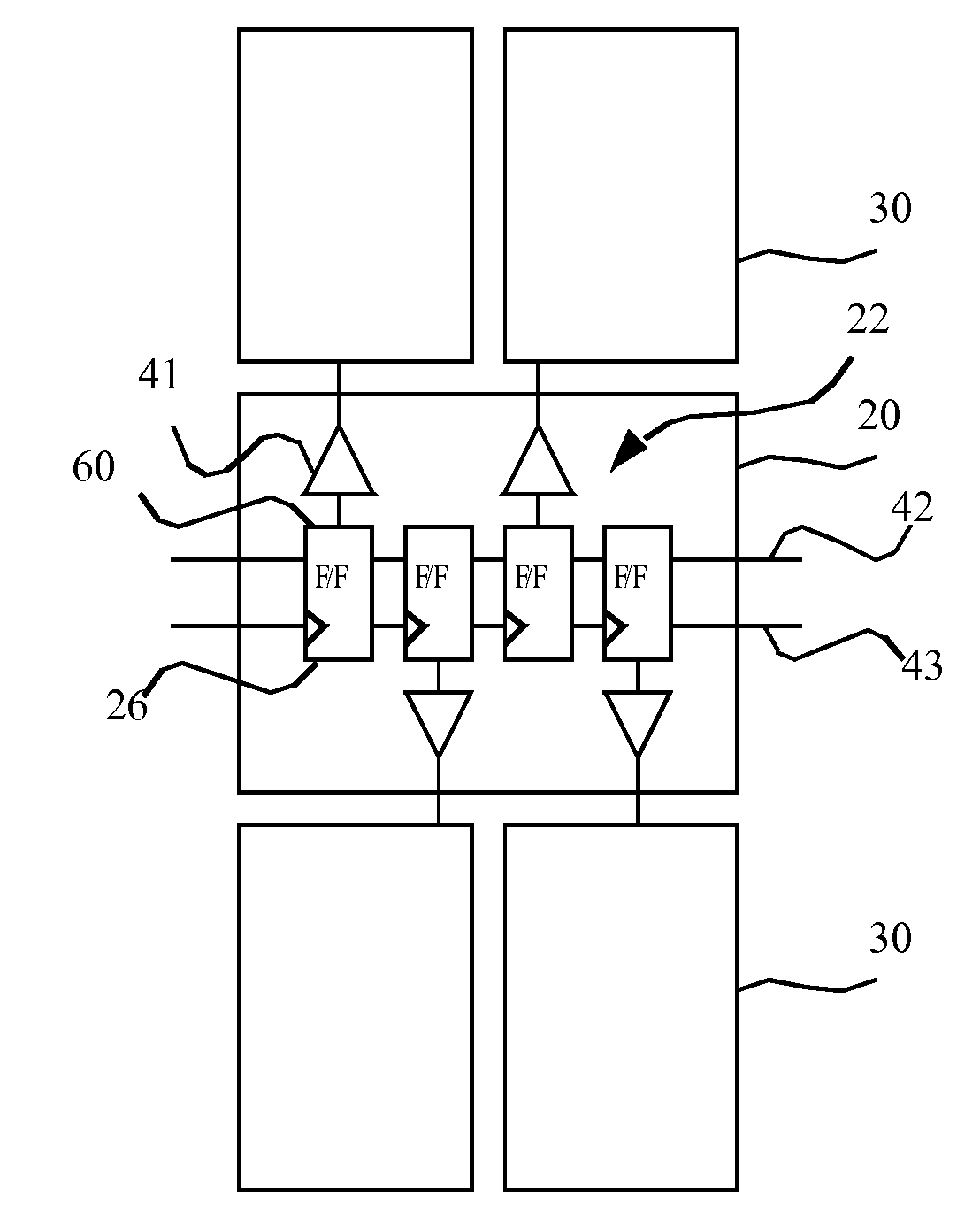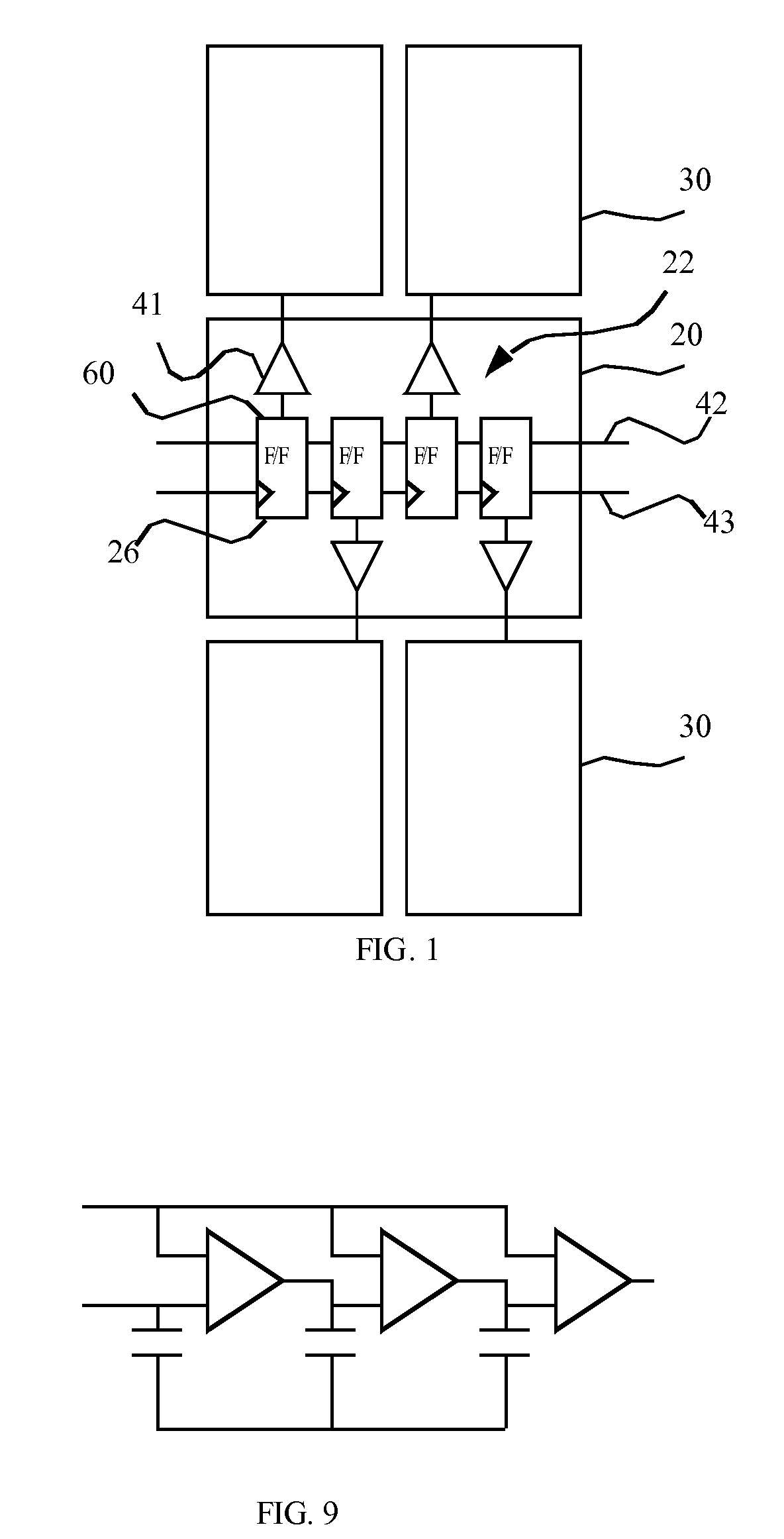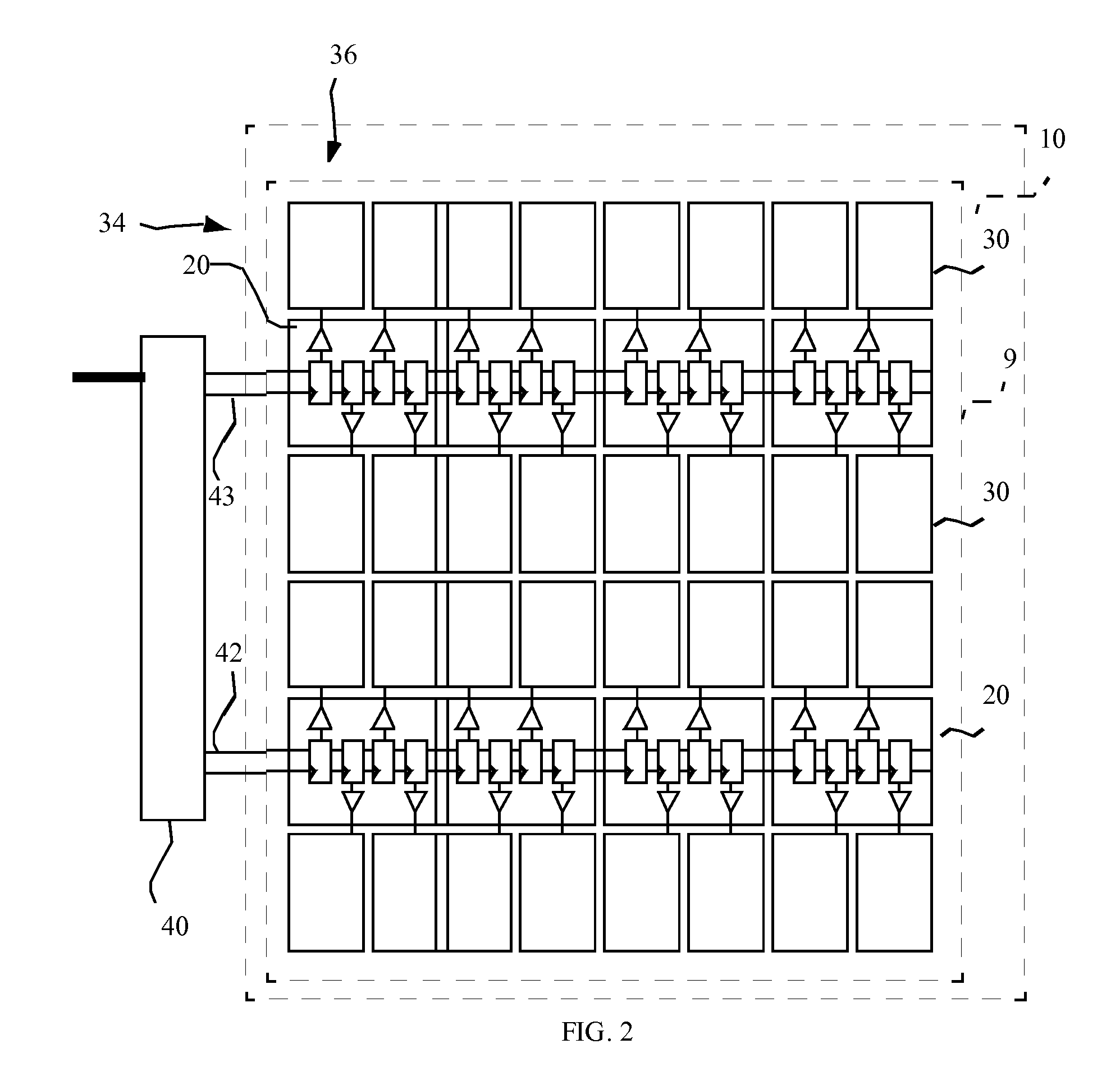Chiplet display device with serial control
a display device and serial control technology, applied in the field of display devices, can solve the problems of limited number of rows (or columns) of passive-matrix drive devices, limited lifetime and power consumption of passive-matrix devices, and limited number of rows (or columns) of passive-matrix devices, so as to improve the aperture ratio, simplify the control method of a display, and improve the effect of life and power consumption
- Summary
- Abstract
- Description
- Claims
- Application Information
AI Technical Summary
Benefits of technology
Problems solved by technology
Method used
Image
Examples
Embodiment Construction
[0029]Referring to FIGS. 1, 2, and 3 in one embodiment of the present invention, a display device includes a substrate 10 and an array of pixels 30 forming a light-emitting area 9 over the substrate 10, the array of pixels 30 arranged in rows 34 and columns 36 formed on the substrate 10. Referring to FIG. 3, each pixel 30 includes a first electrode 12, one or more layers of light-emitting or light-controlling material 14 located over the first electrode 12, and a second electrode 16 located over the one or more layers of light-emitting material 14. The layers 12, 14 and 16 include a pixel 30, for example an organic light-emitting diode 15, in the areas where all three layers 12, 14, 16 overlap and current can flow through the one or more layers of light-emitting or light-controlling material 14 from the electrodes 12, 16.
[0030]A first serial buss 42 has a plurality of electrical conductors, each electrical conductor connecting one chiplet 20 in a first set of chiplets to only one ot...
PUM
 Login to View More
Login to View More Abstract
Description
Claims
Application Information
 Login to View More
Login to View More - R&D
- Intellectual Property
- Life Sciences
- Materials
- Tech Scout
- Unparalleled Data Quality
- Higher Quality Content
- 60% Fewer Hallucinations
Browse by: Latest US Patents, China's latest patents, Technical Efficacy Thesaurus, Application Domain, Technology Topic, Popular Technical Reports.
© 2025 PatSnap. All rights reserved.Legal|Privacy policy|Modern Slavery Act Transparency Statement|Sitemap|About US| Contact US: help@patsnap.com



